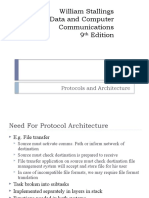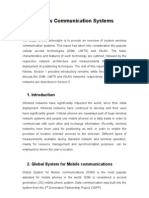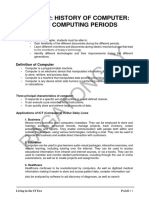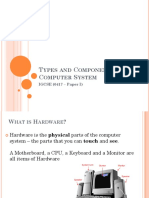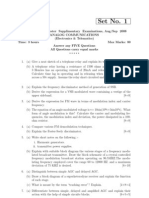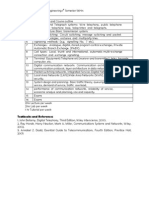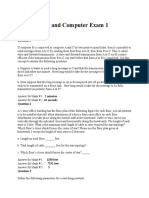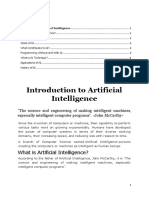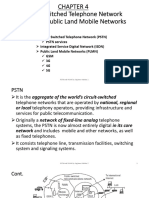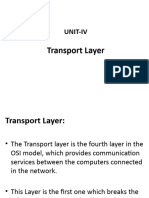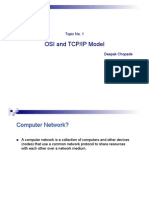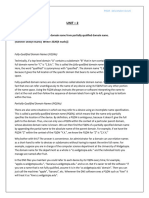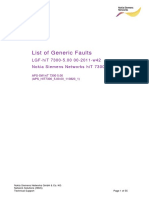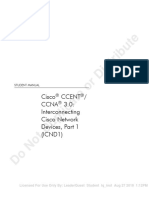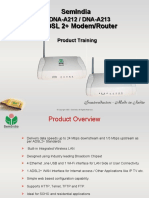Computer networks
Internet, Intranet, Extranet, Lan,
Wan, characteristics and
differences.
Pawe Madera
�Table of Content
1. Generally about Computer Network
2. Network Classification
3. Types of Networks
4. Network Hardware Componenets
5. Local Area Network (LAN)
1.Ethernet
2.Star Topology
3.Mesh networking
4.Wireless Network: Wi-Fi
6. Wide area network
�Table of Content
1. Internet
1.TCP Protocol
2.Packet/Switching
3.Client/Server Networking
4.Internet Functions
2. Intranet
3. Extranet
4. LAN & WAN comparison
5. Intranet & Extranet comparison
�Generally about Computer
Network
group of interconnected computers
allows computers to communicate
share resources and information
�Network Classification
�Types of Networks
�Network Hardware Componenets
�Local Area Network (LAN)
small geographic area (e.g. room, office)
contrast to wide-area networks (WANs)
controlled by one administrative authority
usually high speed
always shared
�Ethernet
developed by Xerox in 19731975
standardized as IEEE 802.3
has replaced token ring, FDDI and ARCNET
usually uses twisted pair cable ( RJ-45)
�Star Topology
one of the most common
hub accepts data from a sender and delivers it to the
receiver
reduces the chance of failure by connecting to a central
node
good performance - passing the Data through
unnecessary nodes is prevented
�Mesh networking
continuous connections around blocked paths by
hopping from node to node until the destination
is reached.
can still operate even when a node breaks down
Wi-Fi mesh is typical
�Wireless Network: Wi-Fi
cheap networking solution
radio waves instead of cables
three standards :
802.11a, 802.11b and 802.11g
2 modes Infrastructure, and Ad-hoc
Hotspots easy internet access
�Wide Area Network (WAN)
computer network that covers a broad area
crosses metropolitan, regional, or national
boundaries
uses routers and public communications links
Example: Internet
�Wide Area Network (WAN)
used to connect LANs and other types of
networks together
Option for WAN connectivity
1. Leased Line
2. Circuit switching
3. Packet switching
4. Cell relay
Speed from 1200 bits/s to 6 Mbit/s
�Wide Area Network (WAN)
Turning into VPN to interconnect their networks,
in that way
�Internet
global system of interconnected computer
networks
consists of millions of private and public networks
�TCP Protocol
TCP= Transmission Control Protocol
Developed by US Department of Defense in 70s
Set of network rules
4 layers structure
�IP protocol
provides addressing for computers
IP Version 4 is the initial version
~4.3 billion (109) Internet hosts
IP v6 provides vastly larger addressing
capabilities
IPv6 will be not compatible with IPv4
�Packet/Switching
Slicing digital message into
packets (parcels)
Size of a packet = 128 bytes
(X.25)
Security of the data
�Client/Server Networking
Model of networking
Balanced architecture
one or more Server
Computers
Example: Internet
�Internet Functions
E-mail
File-sharing
Instant messaging
Internet fax
World Wide Web
Voice over IP
Mobile VoIP
�Intranet
Private computer network
secure sharing organization's information or operational
systems with its employees.
The same architecture as in Internet
private version of the Internet
�Intranet
possible access to the Internet, then geteway with
firewall is applied
Intranet delivers
1.
2.
3.
4.
5.
tools and applications,
collaboration (to facilitate working in groups and teleconferencing)
sophisticated corporate directories
sales and Customer relationship management tools
project management etc
In large intranets, traffic is often similar to public website
traffic
�Extranet
Uses Internet protocols, network connectivity
Share informations as intranet
The number of clients is extended to people
outside the company
interconnections are over a shared network
rather than through dedicated physical lines as in
intranet
�LAN & WAN comparison
LAN
Small area covered
Use public communication links
Usually low speed
Uses Wi-Fi, Ethernet cables
WAN
Large area area covered
Use public communication links
Usually fast speed
Uses optic wires, microwaves,
satellites
�Intranet and Extranet comparison
Intranet
connects users in
company
shared network
single company's
administrator
Dont need so much
security
Extranet
connects user inside
and outside company
multiple company's
administrator
Requires more securtity
�The End









